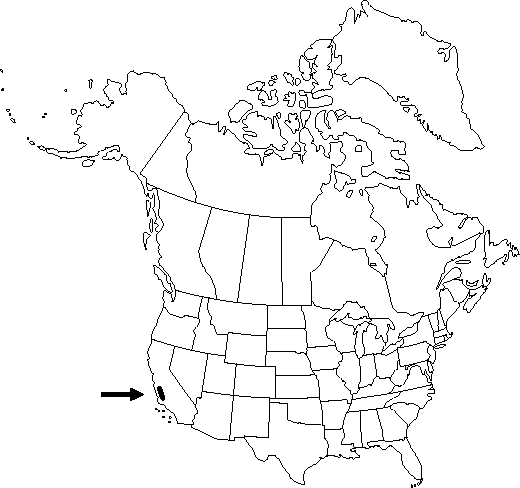familyRanunculaceae
genusDelphinium
subsectionDelphinium subsect. Subscaposa
speciesDelphinium gypsophilum
Difference between revisions of "Delphinium gypsophilum subsp. parviflorum"
Brittonia 8: 5. 1954.
Common names: Small-flowered gypsum-loving larkspur
Conservation concernEndemic
Treatment appears in FNA Volume 3.
FNA>Volume Importer |
FNA>Volume Importer |
||
| Line 24: | Line 24: | ||
}}<!-- | }}<!-- | ||
| − | --><span class="statement" id="st- | + | --><span class="statement" id="st-undefined" data-properties=""><b>Stems </b>(30-)60-90(-140) cm. <b>Inflorescences</b> ± dense, with 5-13 flowers per 5 cm. <b>Flowers</b>: sepals white to pink, erect, lateral sepals 7-10 × 3-7 mm, spurs 7-11 mm; lower petal blades white or yellow, 3-5 mm. <b>2n</b> = 16.</span><!-- |
-->{{Treatment/Body | -->{{Treatment/Body | ||
| Line 57: | Line 57: | ||
|publication year=1954 | |publication year=1954 | ||
|special status=Conservation concern;Endemic | |special status=Conservation concern;Endemic | ||
| − | |source xml=https://jpend@bitbucket.org/aafc-mbb/fna- | + | |source xml=https://jpend@bitbucket.org/aafc-mbb/fna-data-curation.git/src/9216fc802291cd3df363fd52122300479582ede7/coarse_grained_fna_xml/V3/V3_528.xml |
|genus=Delphinium | |genus=Delphinium | ||
|section=Delphinium sect. Diedropetala | |section=Delphinium sect. Diedropetala | ||
| Line 63: | Line 63: | ||
|species=Delphinium gypsophilum | |species=Delphinium gypsophilum | ||
|subspecies=Delphinium gypsophilum subsp. parviflorum | |subspecies=Delphinium gypsophilum subsp. parviflorum | ||
| − | |||
| − | |||
| − | |||
| − | |||
| − | |||
| − | |||
| − | |||
| − | |||
| − | |||
| − | |||
| − | |||
| − | |||
}}<!-- | }}<!-- | ||
-->[[Category:Treatment]][[Category:Delphinium gypsophilum]] | -->[[Category:Treatment]][[Category:Delphinium gypsophilum]] | ||
Revision as of 14:42, 27 July 2019
Stems (30-)60-90(-140) cm. Inflorescences ± dense, with 5-13 flowers per 5 cm. Flowers: sepals white to pink, erect, lateral sepals 7-10 × 3-7 mm, spurs 7-11 mm; lower petal blades white or yellow, 3-5 mm. 2n = 16.
Phenology: Flowering spring.
Habitat: Open oak woodlands, chaparral, and grassland
Elevation: 200-600 m
Discussion
Of conservation concern.
Delphinium gypsophilum subsp. parviflorum is more infrequent than D. gypsophilum subsp. gypsophilum.
This subspecies is sometimes confused with Delphinium parishii subsp. pallidum. Plants of D. gypsophilum subsp. parviflorum are usually taller and grow in grasslands and woodlands; D. parishii subsp. pallidum plants are usually shorter and grow in chaparral and shrubland. Hybrids occur with Delphinium parryi.
Selected References
None.
Lower Taxa
None.
